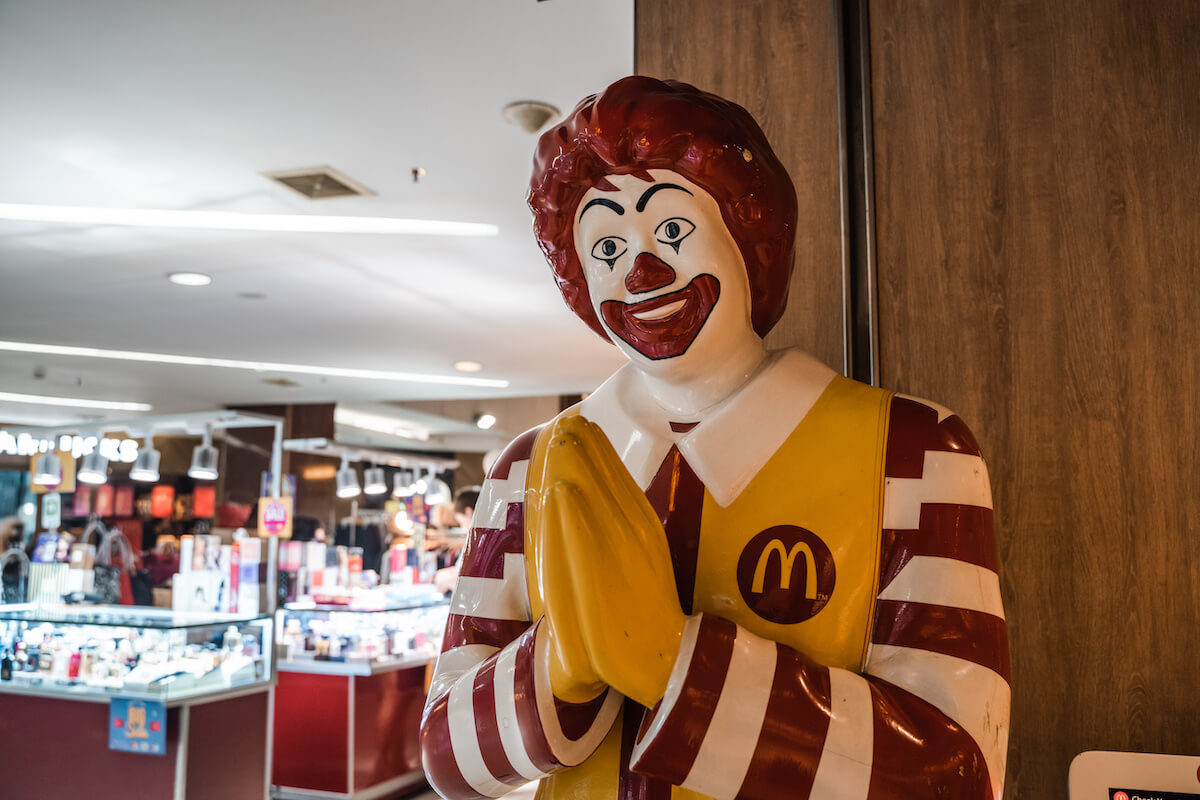The power of restaurant groups: Should you join the club?
Skip the article and turn takeaways into action by scheduling a call with our team.
When you think of publicly traded companies, Taco Bell might not be the first one that jumps into your head. Sure, they’re everywhere (even in Bangkok now, for heaven’s sake), but they’re just some fast-food joint where you can get late-night munchies. Right? Well, not quite. Like many other nationally and internationally recognized brands, the company is part of a restaurant group–a multibillion-dollar company that’s publicly traded.
The history of big business in the restaurant industry is pretty long. Still, you can sum it up like this: Wealth and good management practices consolidate to create robust and well-run organizations. Businesses become big due to their success and up the ante for the industry. Increasing levels of sophistication are the rule, not the exception.
This is true not just of any hospitality group like restaurants or hotels, but of business in general. When restaurant chains gain momentum, it’s impressive to watch. This native Austinite remembers when Torchy’s Tacos was a run-down taco truck. Now it’s in 14 states. That’s pretty wild—but not entirely unusual in the restaurant business.
Restaurant groups occur when corporate financing meets yummy food. The two seem worlds apart to idealistic foodies, but they’re not. One might argue that they’re a feature of nationalization and, further, globalization. It may be shocking that there’s a KFC across from the Great Pyramid of Giza or multiple Popeye locations in Saigon, Vietnam (yes, you can call it Saigon), but that’s the way the world is these days. It’s happening because restaurant groups have access to capital and the brains to use that capital.
What restaurant groups should you be aware of? Would it benefit you to be part of one? In this article, we’ll examine what they have done for the industry overall and where this trend is going. But first—how did we get here?
The (inter)nationalization of restaurant groups

Let’s start with the assertion that the food we eat today is very different from what our grandparents ate. It’s wildly different than what our great-grandparents ate. It’s even changed within our lifetimes, and in many cases, for the better. Those over 40 may recall the dearth of good beer at convenience stores and the lower food quality at restaurants back in the 1980s and 90s. As Ari Weizenweig described well, quality and taste have become much more developed. They’ve also become much more standardized.
That’s largely due to the centralization of distribution routes in the food service industry. It’s also due to the spread of culinary knowledge due to the internet. In many parts of the U.S., even seemingly simple things like fresh cilantro and garlic were hard to come by decades ago. Restaurateurs had fewer ingredients available to them, and the ones they had were either locally sourced, frozen, or canned.
There are few better examples of distribution routes changing nationwide tastes than the acquisition of Anheuser-Busch by InBev in 2008. Suddenly, once only locally-available brews like Blue Moon were found nationwide. Those with a long memory may recall an enormous demand for a greater variety of beer. Heck, the plot of ‘Smokey and the Bandit’ is about smuggling Coors beer from Colorado to Georgia, and that came out in 1977. A lot has changed since then.
Restaurant groups and food conglomerates have been a large part of that change. Yes, there have been downsides. But for the most part, it’s been a positive change for palates everywhere—and the trend has led to a cascade of changes that can’t be undone.
The most important of these changes is that people expect better-tasting food than ever before. It’s also led to an unprecedented degree of commercialization and corporatization of the industry. So it goes.
Major restaurant groups and their subsidiaries

You have probably noticed a restaurant chain or two in your time. Chains are often part of restaurant groups that are publicly traded. Some of these groups are enormous companies.
Consider Darden Restaurants, for example. Their holdings include Olive Garden, Longhorn Steakhouse, and many other familiar names, including fine-dining restaurant Eddie V’s. The company was founded by none other than food industry giant General Mills, which ran things until 1995.
Dine Brands runs Applebee’s and IHOP (it was, in fact, founded as IHOP). Brinker International owns Chili’s Grill & Bar, which also runs Maggiano’s Little Italy. Fertitta Group, Inc. operates Landry’s, while Red Lobster is run by, well, Red Lobster.
Of course, you’re probably aware of industry titans like McDonald’s or Yum! Brands that owns KFC, Taco Bell, and Pizza Hut. Bloomin’ Brands includes casual-dining staples like Outback Steakhouse and Carrabba’s Italian Grill (you know, because of the Bloomin’ Onion).
We partner with some outstanding restaurant groups, including Snooze, Cheesecake Factory, Dick’s Last Resort, Cali BBQ, and Dine Brands. As these relationships blossom, the businesses evolve and thrive in partnership, and everybody wins.
Perks of being part of a restaurant group

Are there benefits to being part of a restaurant group? Most definitely. For restaurant owners, the perks come primarily from financial and supply chain gains, while employees benefit from well-defined contracts and HR departments to handle disputes.
On the financial side, because restaurant groups are often publicly traded entities, they can raise capital quickly from private-equity firms like investment banks and ordinary investors. This doesn’t mean that restaurants are free from financial constraints—far from it. It means they have more money to play with and can take more risks, especially when expanding to new locations.
Restaurant groups also leverage supply chain benefits in economies of scale. One reason McDonald’s can produce hamburgers so cheap, for example, is they have access to enormous amounts of product. A hamburger is an amazingly complex product that relies on ingredients from numerous suppliers: beef, vegetables, wheat, cheese, seasoning, condiments, and packaging. The larger the supply of materials a company has to work with, the less time they have to spend on each product. It works the same in any industry—managing vast amounts of products can lead to cheaper products, but occasionally at the cost of quality. It’s a give-and-take scenario.
Additionally, restaurant groups can rely on a comparatively large marketing budget to get the word out. This can be a massive advantage, as promotions and advertising are a major cost for small, independent restaurants.
In a downturn like the one experienced during the pandemic, restaurant groups have deeper pockets and can wait out the competition. With significant bankrolling, they can ride out periods of loss and still come out on top. Again, this is like any other big business: Consider how it took Amazon 14 years to make a profit, and you’ll get the idea.
So, would it benefit your restaurant to be part of a restaurant group? The answer is a resounding “maybe.’ It all depends on your vision. If you intend to maintain a locally-sourced, locally-oriented restaurant, then probably not. If, on the other hand, you’d like your restaurant to become a household name, then the answer may be yes.
How to become part of a restaurant group?
There are two ways to become part of a restaurant group, and they’re very straightforward:
- Try to get acquired by an already-existing restaurant group
- Found your own restaurant group
Those are the two options that are far easier said than done. Each requires dedication, consistency, and refining strategies and practices over a long period of time.
If you’d like your brand to be acquired, for example, you’ll need to be well-established. A new concept that fills a gap in the industry can certainly help your cause. Above all, you’ll need a solid business plan that has a vision far into the future with proven growth potential. Then the pitching begins, and only fate and the almighty dollar know how that’ll turn out.
Founding your own restaurant group is certainly doable, as is a plan to expand your restaurant to new locations. This doesn’t necessarily mean even branching out of your hometown. Revisit how Ari Weizenweig did just that—the guy knows what he’s doing, and the philosophy behind the uber-successful-but-still-local Zingerman’s is worth delving into.
Where’s this all going?
After a several-decade-long discovery phase, the restaurant industry has coalesced around multiple restaurant concepts that are proven to work. This industry format has taken the whole world by storm and doesn’t seem set to stop anytime soon. The world is changing faster than ever, and the restaurant industry is keeping pace with change. For much of the world, it’s been a positive change. While globalization may indeed be slowing down due to energy and political constraints, consumer expectations have changed worldwide. Furthermore, restaurant groups have helped nail down the business side of the industry—providing solid models to follow as well as daunting competitors to face.
It’s hard to see the trend toward finance-backed restaurants reversing, especially in the United States. Realistically, we’re looking at restaurant groups controlling more of the market year by year.
Positive change for your restaurant
If you want to be part of a restaurant group—or compete with them—you’ll need software that can keep up with industry change. And we’re proud to tell you that Yelp Guest Manager can do just that. Want to get reservations automated without a hitch? We’ve got you. If you need a FOH platform that links up with all the latest and greatest software, including POS systems, third-party deliveries, and more, Guest Manager is your answer.
Guest Manager is just one piece of the Yelp for Restaurant’s pie. Check out Yelp Kiosk, which can free up around 50% of FOH busywork while allowing guests to check in and seat themselves. That’s one heck of a boon in a tight labor market. And we want to show you how it works.
Reach out to us for a free demo, and we’ll show you the ropes. Because who knows, your restaurant could end up leading the next big restaurant group one day.